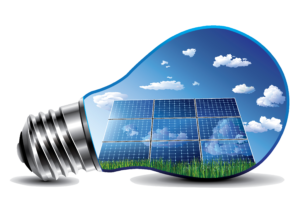News and Prospects in Electrical Utility Industry
The electrical industry emerged and started developing during the Industrial Revolution. Rapidly evolving factories had generated the natural demand for energy. That is because the electric components and equipment had become an essential part of any enterprise, whether it is a production of footwear or a machine-building plant.
However, nowadays the utilities have some decline in their incomes. Statistics show that the revenue from power consumption has decreased in recent ten years (from 2005 to 2015). Many European countries use technologies that reduce waste in manufacturing. The tendency is enhanced due to modern facilities and renewable resources.

Huge Energy Consumption of Business Customers
Huge international corporations like Microgaming company uses an enormous volume of electricity every day. For instance, Google spends over 12.5 million Wh each day. Thus, it is 0.013% of the world’s usage. Indeed, an unbelievable number. And this value includes over 30% of the energy extracted from alternative sources. In addition, modified data centers use only 50% of the power required for common ones.
However, the company tries to reduce huge consumption. It has invested approximately one billion dollars in renewable resources. Let’s go on. Four American Facebook centers consume 900 million kWh yearly. One of its server needs 40 MW. For comparison, the entire population of a small town needs about 30 MW.
How to Close the Huge Demand Gap?
The main challenge of today in the electric power industry is that its customers are likely to reduce their energy consumption for economic reasons. Not surprisingly, they are searching for innovations that will help them to manage the electricity usage. A few years ago, utilities had no offers that could satisfy this new demand.
If you have a business in the electrical sector, then you may provide new solutions to resolve the gap, be more flexible, and be able to expand your sales market. The answer is to produce technologies for waste analyze and control.
The Rapid Proliferation of Smart-Home Devices
Implementing innovative facilities would help not only business clients but also non-commercial users. Such gadgets have already appeared in houses and apartments.
 Smart-home hi-tech includes different devices that help us to manage with our housework. For example, using smart speakers is a handy feature of a modern house, giving us a wonderful opportunity to turn on the light, simply saying “light on” or something else.
Smart-home hi-tech includes different devices that help us to manage with our housework. For example, using smart speakers is a handy feature of a modern house, giving us a wonderful opportunity to turn on the light, simply saying “light on” or something else.
Thermostats with sensors are also very useful because they give us information about the appropriate level of cooling and heating of the premise. For the first time, the majority of survey respondents considered them as needless. They said they do not want to pay for such technologies.
However, the situation changed over time. Many users noticed that modern heating control systems helped them to reduce their energy bills, even up to 20% yearly. So, now we are more likely to see homes with Google Home or Amazon’s Alexa services.
“Retailization” Concept
Retailization is the concept described firstly this year as a solution to nullify the demand gap and make the utility sector closer to the customers. For power industry, the goal is to make companies more client-oriented. Online shopping and banking, as well as energy management solutions, may help. The first step was an installation of technologies for measuring electrical effectiveness, software for analytics, advanced battery storages and smart-home devices. In 2015 only 40 % of users got information from their utilities. However, there is still a lot of work to do.
Renewables Growth in the Electrical Utility Industry
 Renewable sources nowadays become more widespread among business customers. This need is naturally caused by reducing of world’s common resources, like coal, gas or oil. Now the cheapest way is to use the energy of the sun and wind.
Renewable sources nowadays become more widespread among business customers. This need is naturally caused by reducing of world’s common resources, like coal, gas or oil. Now the cheapest way is to use the energy of the sun and wind.
Statistics show that wind stations are the favorite choice among companies in 2015. Such giants as Google, Facebook and Amazon prefer to use them. Facebook is going to launch a 200 MW turbine field.
The situation with solar panels is similar – their percentage is constantly increasing in industries. The experts predict that the prices on such facilities will fall to half the cost of common sources.
However, overcast, as well as high temperatures, can decline the electricity production.
Despite such flaws, alternative power is more perspective than the traditional one. Also, using it in the future will nullify the contamination of ecological systems.